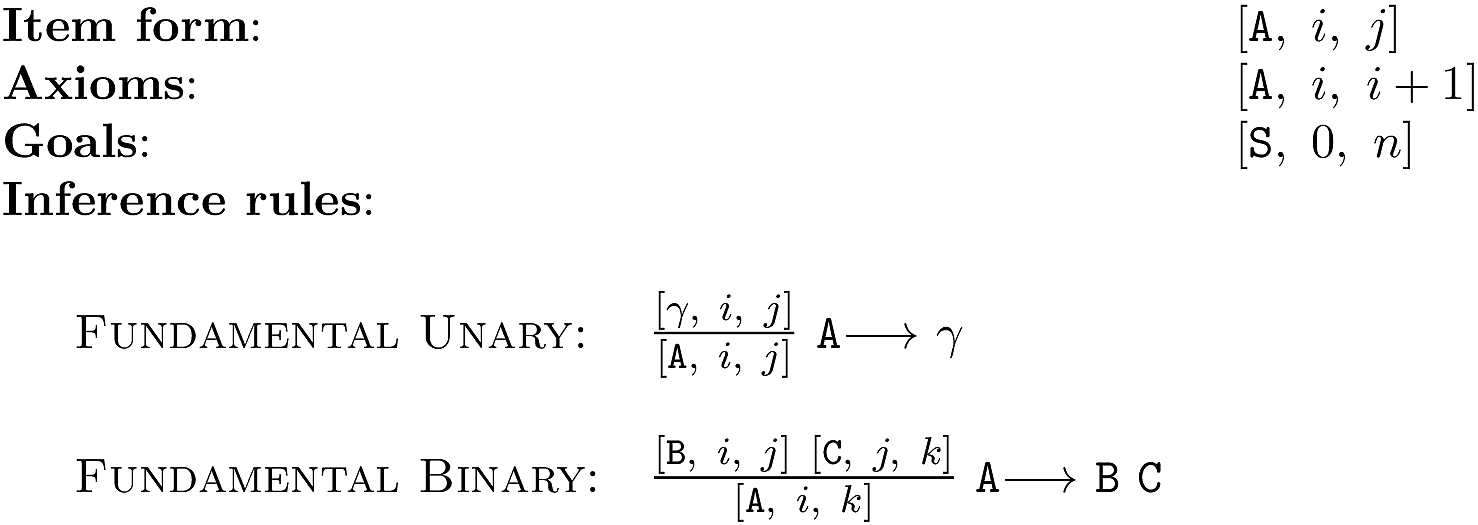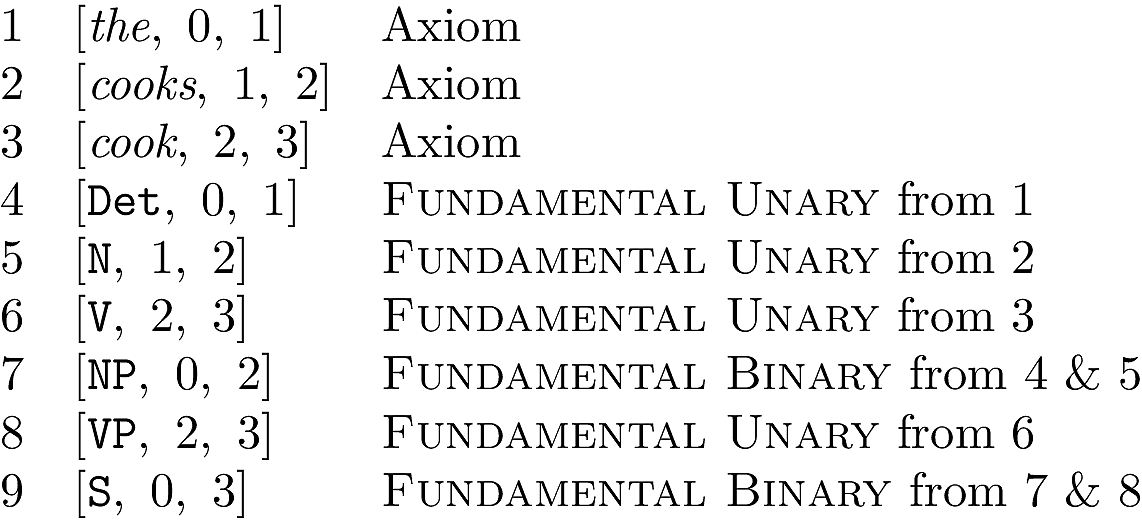(ns foundations.computational.linguistics
(:require [reagent.core :as r]
[reagent.dom :as rd]
[clojure.zip :as z]
[clojure.pprint :refer [pprint]]
[clojure.string :refer [index-of]]
;[clojure.string :as str]
))
(enable-console-print!)
(defn log [a-thing]
(.log js/console a-thing))
(defn render-vega [spec elem]
(when spec
(let [spec (clj->js spec)
opts {:renderer "canvas"
:mode "vega"
:actions {
:export true,
:source true,
:compiled true,
:editor true}}]
(-> (js/vegaEmbed elem spec (clj->js opts))
(.then (fn [res]
(. js/vegaTooltip (vega (.-view res) spec))))
(.catch (fn [err]
(log err)))))))
(defn vega
"Reagent component that renders vega"
[spec]
(r/create-class
{:display-name "vega"
:component-did-mount (fn [this]
(render-vega spec (rd/dom-node this)))
:component-will-update (fn [this [_ new-spec]]
(render-vega new-spec (rd/dom-node this)))
:reagent-render (fn [spec]
[:div#vis])}))
;making a histogram from a list of observations
(defn list-to-hist-data-lite [l]
""" takes a list and returns a record
in the right format for vega data,
with each list element the label to a field named 'x'"""
(defrecord rec [category])
{:values (into [] (map ->rec l))})
(defn makehist-lite [data]
{
:$schema "https://vega.github.io/schema/vega-lite/v4.json",
:data data,
:mark "bar",
:encoding {
:x {:field "category",
:type "ordinal"},
:y {:aggregate "count",
:type "quantitative"}
}
})
(defn list-to-hist-data [l]
""" takes a list and returns a record
in the right format for vega data,
with each list element the label to a field named 'x'"""
(defrecord rec [category])
[{:name "raw",
:values (into [] (map ->rec l))}
{:name "aggregated"
:source "raw"
:transform
[{:as ["count"]
:type "aggregate"
:groupby ["category"]}]}
{:name "agg-sorted"
:source "aggregated"
:transform
[{:type "collect"
:sort {:field "category"}}]}
])
(defn makehist [data]
(let [n (count (distinct ((data 0) :values)))
h 200
pad 5
w (if (< n 20) (* n 35) (- 700 (* 2 pad)))]
{
:$schema "https://vega.github.io/schema/vega/v5.json",
:width w,
:height h,
:padding pad,
:data data,
:signals [
{:name "tooltip",
:value {},
:on [{:events "rect:mouseover", :update "datum"},
{:events "rect:mouseout", :update "{}"}]}
],
:scales [
{:name "xscale",
:type "band",
:domain {:data "agg-sorted", :field "category"},
:range "width",
:padding 0.05,
:round true},
{:name "yscale",
:domain {:data "agg-sorted", :field "count"},
:nice true,
:range "height"}
],
:axes [
{ :orient "bottom", :scale "xscale" },
{ :orient "left", :scale "yscale" }
],
:marks [
{:type "rect",
:from {:data "agg-sorted"},
:encode {
:enter {
:x {:scale "xscale", :field "category"},
:width {:scale "xscale", :band 1},
:y {:scale "yscale", :field "count"},
:y2 {:scale "yscale", :value 0}
},
:update {:fill {:value "steelblue"}},
:hover {:fill {:value "green"}}
}
},
{:type "text",
:encode {
:enter {
:align {:value "center"},
:baseline {:value "bottom"},
:fill {:value "#333"}
},
:update {
:x {:scale "xscale", :signal "tooltip.category", :band 0.5},
:y {:scale "yscale", :signal "tooltip.count", :offset -2},
:text {:signal "tooltip.count"},
:fillOpacity [
{:test "isNaN(tooltip.count)", :value 0},
{:value 1}
]
}
}
}
]
}))
(defn hist [l]
(-> l
list-to-hist-data
makehist
vega))
; for making bar plots
(defn list-to-barplot-data-lite [l m]
""" takes a list and returns a record
in the right format for vega data,
with each list element the label to a field named 'x'"""
(defrecord rec [category amount])
{:values (into [] (map ->rec l m))})
(defn makebarplot-lite [data]
{
:$schema "https://vega.github.io/schema/vega-lite/v4.json",
:data data,
:mark "bar",
:encoding {
:x {:field "element", :type "ordinal"},
:y {:field "value", :type "quantitative"}
}
})
(defn list-to-barplot-data [l m]
""" takes a list and returns a record
in the right format for vega data,
with each list element the label to a field named 'x'"""
(defrecord rec [category amount])
{:name "table",
:values (into [] (map ->rec l m))})
(defn makebarplot [data]
(let [n (count (data :values))
h 200
pad 5
w (if (< n 20) (* n 35) (- 700 (* 2 pad)))]
{
:$schema "https://vega.github.io/schema/vega/v5.json",
:width w,
:height h,
:padding pad,
:data data,
:signals [
{:name "tooltip",
:value {},
:on [{:events "rect:mouseover", :update "datum"},
{:events "rect:mouseout", :update "{}"}]}
],
:scales [
{:name "xscale",
:type "band",
:domain {:data "table", :field "category"},
:range "width",
:padding 0.05,
:round true},
{:name "yscale",
:domain {:data "table", :field "amount"},
:nice true,
:range "height"}
],
:axes [
{ :orient "bottom", :scale "xscale" },
{ :orient "left", :scale "yscale" }
],
:marks [
{:type "rect",
:from {:data "table"},
:encode {
:enter {
:x {:scale "xscale", :field "category"},
:width {:scale "xscale", :band 1},
:y {:scale "yscale", :field "amount"},
:y2 {:scale "yscale", :value 0}
},
:update {:fill {:value "steelblue"}},
:hover {:fill {:value "green"}}
}
},
{:type "text",
:encode {
:enter {
:align {:value "center"},
:baseline {:value "bottom"},
:fill {:value "#333"}
},
:update {
:x {:scale "xscale", :signal "tooltip.category", :band 0.5},
:y {:scale "yscale", :signal "tooltip.amount", :offset -2},
:text {:signal "tooltip.amount"},
:fillOpacity [
{:test "isNaN(tooltip.amount)", :value 0},
{:value 1}
]
}
}
}
]
}))
(defn barplot [l m]
(vega (makebarplot (list-to-barplot-data l m))))
; now, for tree making
;(thanks to Taylor Wood's answer in this thread on stackoverflow:
; https://stackoverflow.com/questions/57911965)
(defn count-up-to-right [loc]
(if (z/up loc)
(loop [x loc, pops 0]
(if (z/right x)
pops
(recur (z/up x) (inc pops))))
0))
(defn list-to-tree-spec [l]
""" takes a list and walks through it (with clojure.zip library)
and builds the record format for the spec needed to for vega"""
(loop [loc (z/seq-zip l), next-id 0, parent-ids [], acc []]
(cond
(z/end? loc) acc
(z/end? (z/next loc))
(conj acc
{:id (str next-id)
:name (str (z/node loc))
:parent (when (seq parent-ids)
(str (peek parent-ids)))})
(and (z/node loc) (not (z/branch? loc)))
(recur
(z/next loc)
(inc next-id)
(cond
(not (z/right loc))
(let [n (count-up-to-right loc)
popn (apply comp (repeat n pop))]
(some-> parent-ids not-empty popn))
(not (z/left loc))
(conj parent-ids next-id)
:else parent-ids)
(conj acc
{:id (str next-id)
:name (str (z/node loc))
:parent (when (seq parent-ids)
(str (peek parent-ids)))}))
:else
(recur (z/next loc) next-id parent-ids acc))))
(defn maketree [w h tree-spec]
""" makes vega spec for a tree given tree-spec in the right json-like format """
{:$schema "https://vega.github.io/schema/vega/v5.json"
:data [{:name "tree"
:transform [{:key "id" :parentKey "parent" :type "stratify"}
{:as ["x" "y" "depth" "children"]
:method {:signal "layout"}
:size [{:signal "width"} {:signal "height"}]
:type "tree"}]
:values tree-spec
}
{:name "links"
:source "tree"
:transform [{:type "treelinks"}
{:orient "horizontal"
:shape {:signal "links"}
:type "linkpath"}]}]
:height h
:marks [{:encode {:update {:path {:field "path"} :stroke {:value "#ccc"}}}
:from {:data "links"}
:type "path"}
{:encode {:enter {:size {:value 50} :stroke {:value "#fff"}}
:update {:fill {:field "depth" :scale "color"}
:x {:field "x"}
:y {:field "y"}}}
:from {:data "tree"}
:type "symbol"}
{:encode {:enter {:baseline {:value "bottom"}
:font {:value "Courier"}
:fontSize {:value 14}
:angle {:value 0}
:text {:field "name"}}
:update {:align {:signal "datum.children ? 'center' : 'center'"}
:dy {:signal "datum.children ? -6 : -6"}
:opacity {:signal "labels ? 1 : 0"}
:x {:field "x"}
:y {:field "y"}}}
:from {:data "tree"}
:type "text"}]
:padding 5
:scales [{:domain {:data "tree" :field "depth"}
:name "color"
:range {:scheme "magma"}
:type "linear"
:zero true}]
:signals [{:bind {:input "checkbox"} :name "labels" :value true}
{:bind {:input "radio" :options ["tidy" "cluster"]}
:name "layout"
:value "tidy"}
{:name "links"
:value "line"}]
:width w}
)
(defn tree-depth
"get the depth of a tree (list)"
[list]
(if (seq? list)
(inc (apply max 0 (map tree-depth list)))
0))
(defn tree
"plot tree using vega"
[list]
(let [spec (list-to-tree-spec list)
h (* 30 (tree-depth list))]
(vega (maketree 700 h spec))))
(defn logsumexp [& log-vals]
(let [mx (apply max log-vals)]
(+ mx
(Math/log2
(apply +
(map (fn [z] (Math/pow 2 z))
(map (fn [x] (- x mx))
log-vals)))))))
(defn flip [p]
(if (< (rand 1) p)
true
false))
(defn score-categorical [outcome outcomes params]
(if (empty? params)
(throw "no matching outcome")
(if (= outcome (first outcomes))
(Math/log2 (first params))
(score-categorical outcome (rest outcomes) (rest params)))))
(defn list-unfold [generator len]
(if (= len 0)
'()
(cons (generator)
(list-unfold generator (- len 1)))))
(defn sample-gamma [shape scale]
(apply + (repeatedly
shape (fn []
(- (Math/log2 (rand))))
)))
(defn sample-dirichlet [pseudos]
(let [gammas (map (fn [sh]
(sample-gamma sh 1))
pseudos)]
(normalize gammas)))
(defn normalize [dist]
(let [sum (apply + (map prob dist))]
(map
(fn [x]
[(value x) (/ (prob x) sum)] )
dist)))
(defn sample-categorical [dist]
(if (flip (prob (first dist)))
(value (first dist))
(sample-categorical
(normalize (rest dist)))))
A normal form for some formalism refers to a standard format in
which the formalism can be represented. In the theory of context-free
languages, there are several famous normal form theorems which show
that any context-free grammar can be expressed in a particular
format. Some well known normal forms are Greibach normal form and
Chomsky normal form.
A context-free grammar is in Chomsky normal form if every rule is
either of the form
-
\[A \longrightarrow B C\]
-
\[A \longrightarrow a\]
-
\[S \longrightarrow \epsilon\]
where \(A\), \(B\), and \(C\), \(a\) is a terminal, \(S\) is a start
symbol, and \(\epsilon\) is the empty string. In other words, every
rule consists of a pair of nonterminals, a single terminal, or
directly rewrites the start symbol to the empty string.
It can be proven that the string language generated by any
context-free grammar can be generated by a grammar in Chomsky normal
form. To see this, note that for any terminal that appears on the
right-hand-side of a rule \(r: A \longrightarrow \alpha a \beta\), we can (i)
introduce a new nonterminal \(X^{a}_{r}\), (ii) replace \(a\) with
this nonterminal in \(r\), that is, \(A \longrightarrow \alpha
X^{a}_{r} \beta\) and (iii) introduce a rule \(X^{a}_{r}
\longrightarrow a\). By applying this process to every rule in the
grammar we can make sure that terminals are only introduced by unary
production rules.
Similarly, for any rule that has more than \(2\) nonterminals on its
right-hand side \(r: A \longrightarrow A B \alpha\) where \(\alpha \in
N^+\), we can introduce a new nonterminal \(X^{A B}_{r}\), rewrite the
original rule as \(r: A \longrightarrow X^{A B}_{r} \alpha\) and
introduce a new rule \(X^{A B}_{r} \longrightarrow A B\).
In addition to these transformations, some care must be taken to
eliminate null productions and unary rules.
One reason that Chomsky normal form is important, is that it motivates
a parsing algorithm known as the Cocke–Younger–Kasami algorithm or CYK
algorithm.
CYK Parsing

Here is an example of a set of deductions that lead to a valid parse
of the example sentence above.

← 44 Parsing as Deduction
46 Semirings →

